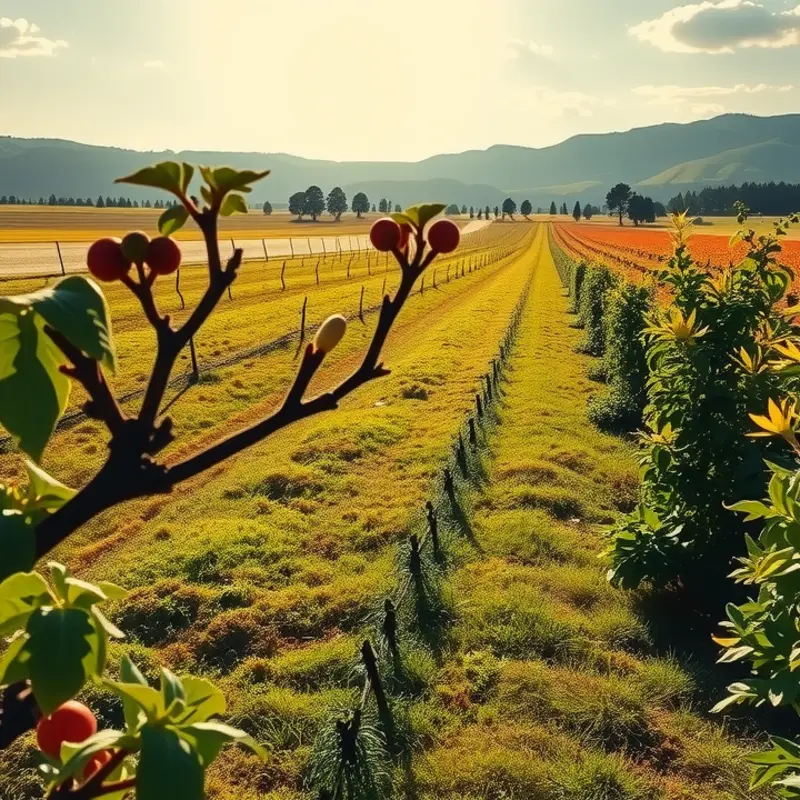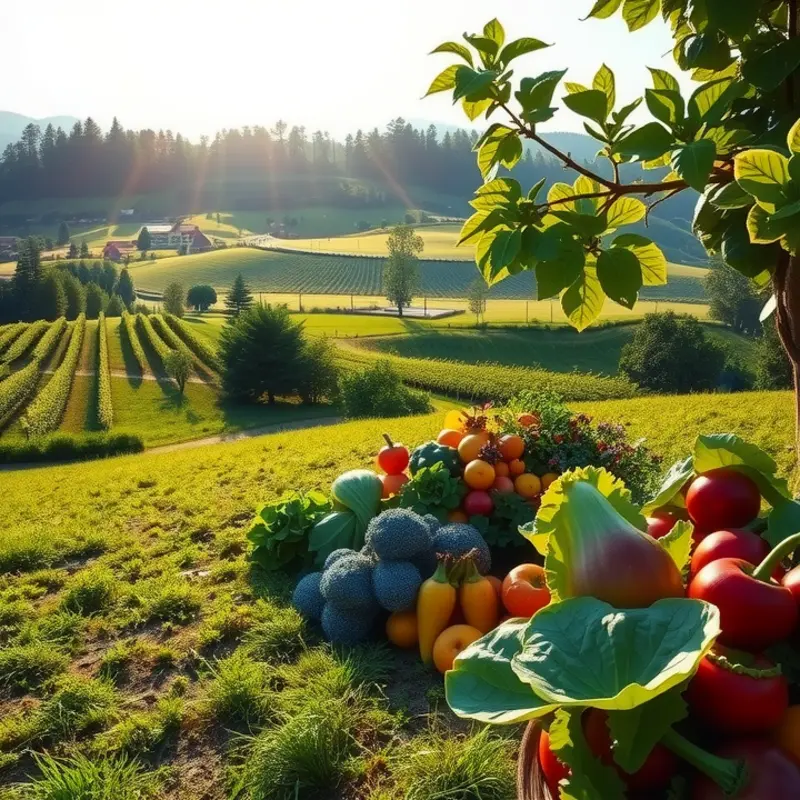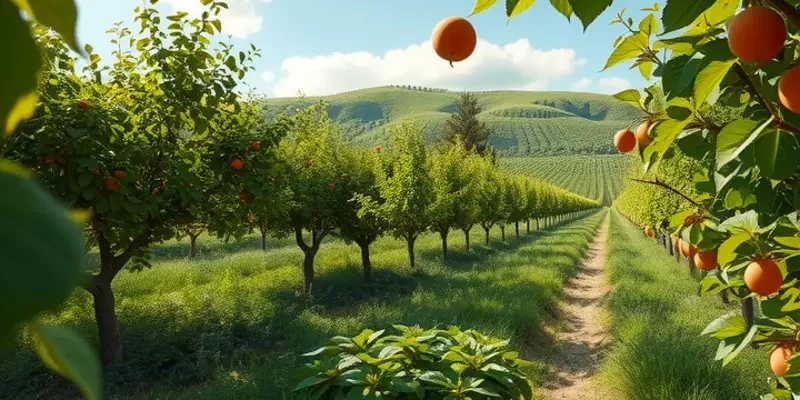Africa’s culinary landscape is as diverse as its cultures, showcasing a vibrant array of spices and flavors that tell stories of tradition and heritage. Each region brings its unique touch, from fiery chilies to aromatic herbs, forming a mosaic of tastes that captivate the senses. This exploration garners a deeper appreciation for the continent’s culinary treasures, inviting food lovers and culture enthusiasts to unlock the secrets of African cuisine.
The Spice Routes of Africa: From Coast to Coast

Africa’s spice routes weave through a continent rich in diverse landscapes that foster unique culinary traditions. From the fertile coastal plains to the arid deserts and lush jungles, each region contributes distinct flavors and aromas to the African culinary tapestry.
In North Africa, the influence of trade routes that once connected ancient empires is evident in spice blends such as ras el hanout and harissa. These aromatic compositions blend an array of spices, including cumin, coriander, and hot peppers, creating layers of flavor emblematic of the Mediterranean and Middle Eastern influences.
Traveling westward, we find West Africa’s cuisine, fueled by a palette of flavors that utilize both indigenous and imported spices. One notable seasoning is berbere, a fiery mix that marries the heat of chili peppers with fenugreek, ginger, and cardamom. It speaks of a heritage intertwined with ancient trade networks connecting Africa to the farthest reaches of the Silk Road. Equally important is the use of palm oil, pervasive in local dishes, which imparts a distinctively rich flavor and is central to dishes like jollof rice and fufu.
East Africa introduces a subtler spice influence, where the use of fresh herbs like coriander and mint complements the staple dishes. Zanzibar, often called the “Spice Island,” adds exotic notes through cloves, nutmeg, and vanilla, drawing from its history as a critical player in the spice trade. These spices enhance the flavors of simple, fresh ingredients, highlighting the natural produce of the region.
Southerly in the continent, spices adapt to a blend of indigenous practices and colonial influences. Here, biltong marinades and curries benefit from a melange of spices like curry leaves, all spice, and smoked paprika. These recipes reflect the region’s ability to integrate diverse influences into an evolving culinary identity.
The trade of these spices historically shaped local economies and culinary techniques, marking a cultural exchange that brought foreign flavors into African homes. This rich history underscores how spices are more than mere ingredients; they are storytellers of cultural resilience and adaptation. For readers interested in global culinary influences, this exploration connects the spice routes of Africa with broader trade networks, a topic further discussed here.
These myriad spices characterize the resilience and adaptability of African cuisine, inviting us to explore how each region crafts its unique flavors, contributing to the continent’s vibrant culinary heritage. From coast to coast, Africa’s spice routes not only enrich its food but also connect generations through the ongoing story of flavor.
The Heat of Tradition: Signature Dishes Across the Continent

African cuisine is a celebration of flavors, where spices and ingredients merge with traditional cooking methods, creating signature dishes that captivate the palate. Each region boasts its own distinct identity through culinary traditions deeply intertwined with local culture.
A fiery favorite from Mozambique, piri-piri chicken encapsulates the zest of the African coast. This dish, characterized by its flaming spice, owes its heat to the vibrant piri-piri pepper. The chicken is marinated in a blend that includes lemon juice, garlic, and onions, then grilled to perfection, locking in the tangy and spicy essence. The simplicity of grilling allows the peppers’ heat to creditably transform the chicken into an unforgettable meal.
In stark contrast, Morocco invites you into its aromatic embrace with tagines, a traditional Berber stew slow-cooked in an earthenware pot. Tagines marry ingredients like preserved lemons, olives, saffron, and a variety of spices such as cinnamon and turmeric. Slow cooking in the cone-shaped vessel ensures flavors are deeply infused, offering both warmth and complexity in every bite. The combination of fruit and meat might seem unconventional, yet it beautifully highlights the rich fusion of sweet and savory elements.
Ethiopia brings its uniqueness through doro wat, a hearty chicken stew simmered with the indispensable spice mix, berbere. Berbere combines ginger, garlic, basil, and fire-hot chili peppers to lay the foundation of the stew’s complex flavor. Traditional cooking involves long hours, enhancing the savory depth of the dish. Doro wat is often served on injera, a sourdough flatbread made from teff flour, absorbing the spices and extending a filling experience.
In the West African realm, jollof rice stands as an emblematic dish with many variations. Key ingredients include tomatoes, onions, and peppers, creating a vivid red base imparted by a mixture of smoked paprika, bay leaves, and thyme. This dish is traditionally prepared in a single pot, allowing flavors to medley and rice grains to absorb the spiced broth entirely. A dish served at celebratory events, jollof rice is loved for its harmonious blend of heat and savor.
African cooking techniques often emphasize patience and care, with slow cooking and stewing being central to flavor development. The inclusion of locally sourced ingredients further ensures that meals deliver the authentic taste of their origins. Such methods contribute not only to preserving local traditions but also to elevating the ingredients’ natural flavors.
Home cooks interested in bringing the African culinary experience to their kitchens can start by gathering a few key spices: piri-piri peppers, berbere, or even ras-el-hanout, a Moroccan spice blend explained in detail here. A little goes a long way as these spices are potent, needing only a subtle amount to transport you to the African fiery heartland.
Cooking these signature dishes provides an opportunity to embrace the rich traditions of African hospitality. By appreciating the intricate flavors and diverse culinary history across the continent, one can truly experience the spirit of African cuisine.
Final words
Africa’s culinary landscape is an intricate tapestry woven from diverse cultures, histories, and flavors. Each spice tells a story, reflecting the rich heritage of the continent. By exploring these spices and the dishes they enhance, enthusiasts can not only elevate their cooking but also cultivate a deeper respect for the traditions that shape these flavors. Whether experimenting at home or enjoying dishes in restaurants, embracing African spices offers an inviting path into an exciting world of culinary exploration, awaiting eager palates and curious minds.








